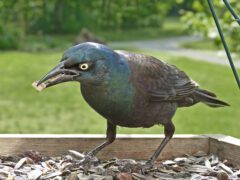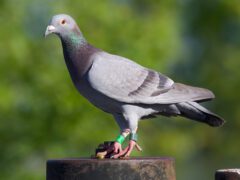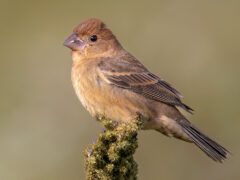The Four Keys to ID
- Size & Shape
A large seabird with an upright penguinlike posture on land (or ice). It has a heavy body, a long neck, a streamlined head, and a thick, pointed bill. The wings are long and narrow to help with "flying" underwater.
Relative Size
Slightly larger than a Razorbill, smaller than a Common Loon.

 crow-sized
crow-sizedMeasurements
- Both Sexes
- Length: 17.7 in (45 cm)
- Weight: 26.5-52.2 oz (750-1481 g)
© Lucas Bobay / Macaulay Library
- Color Pattern
Breeding birds are blackish above and white below, with a whitish line along the upper mandible of the bill. Nonbreeding adults are similar but the throat is white.
© Ryan Schain / Macaulay Library - Behavior
Thick-billed Murres nest in dense colonies on cliffs over saltwater. They forage at sea, where they dive deeply for prey, mostly small fish.
- Habitat
Open ocean over continental shelf and slope for most of the year; breeds on seaside cliffs and islands, mostly in the Arctic.
© Sonja Ross / Macaulay Library
Regional Differences
Ornithologists recognize two subspecies: the smaller lomvia, found from eastern Canada to western Russia, and the larger arra from eastern Russia east to western Canada. The lomvia subspecies has brownish tones on the head (often not visible in the field), while most arra have fully black heads and are sometimes called Pallas’s Murre or Pallas’s Guillemot.

















